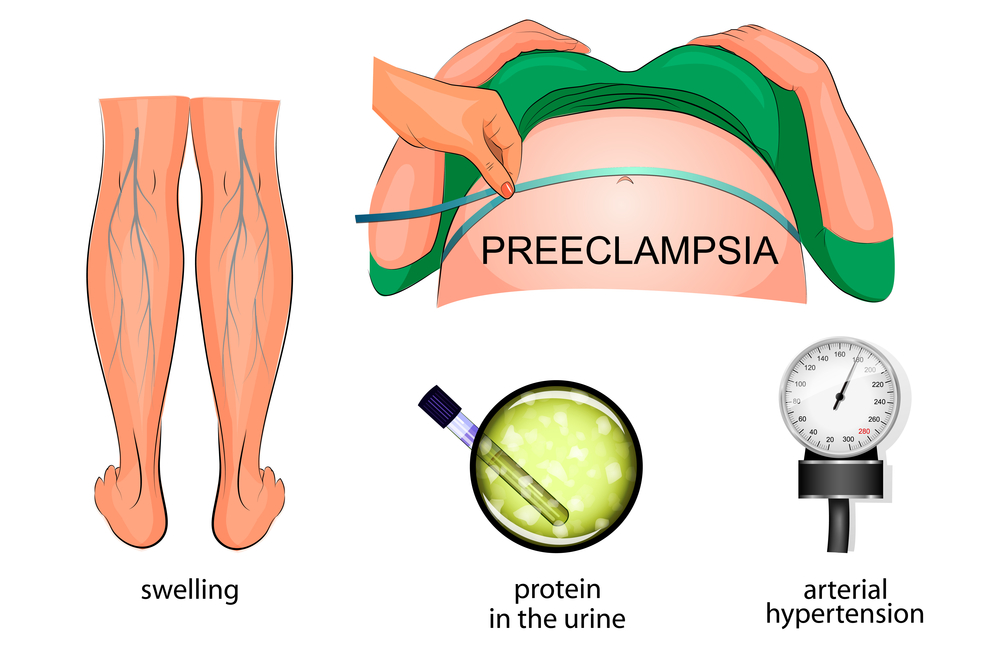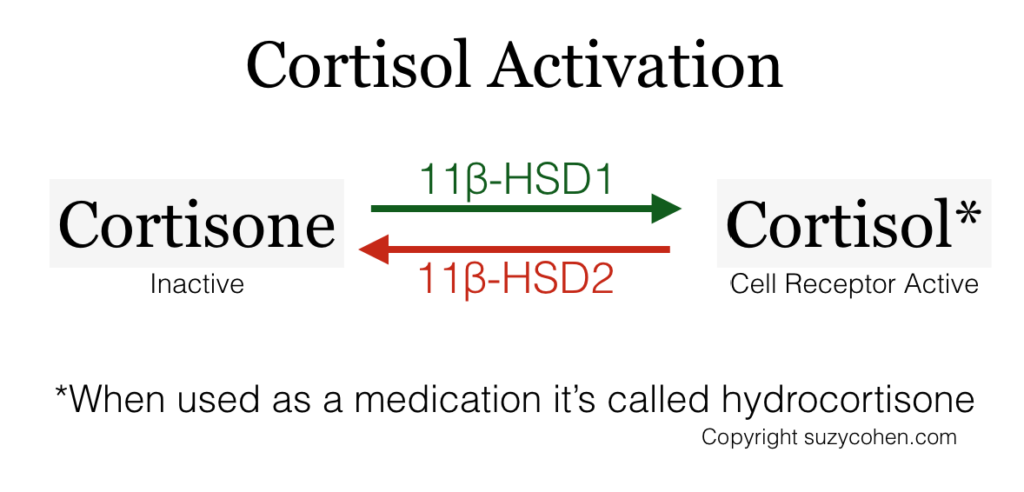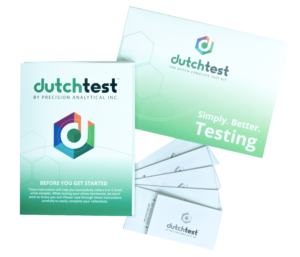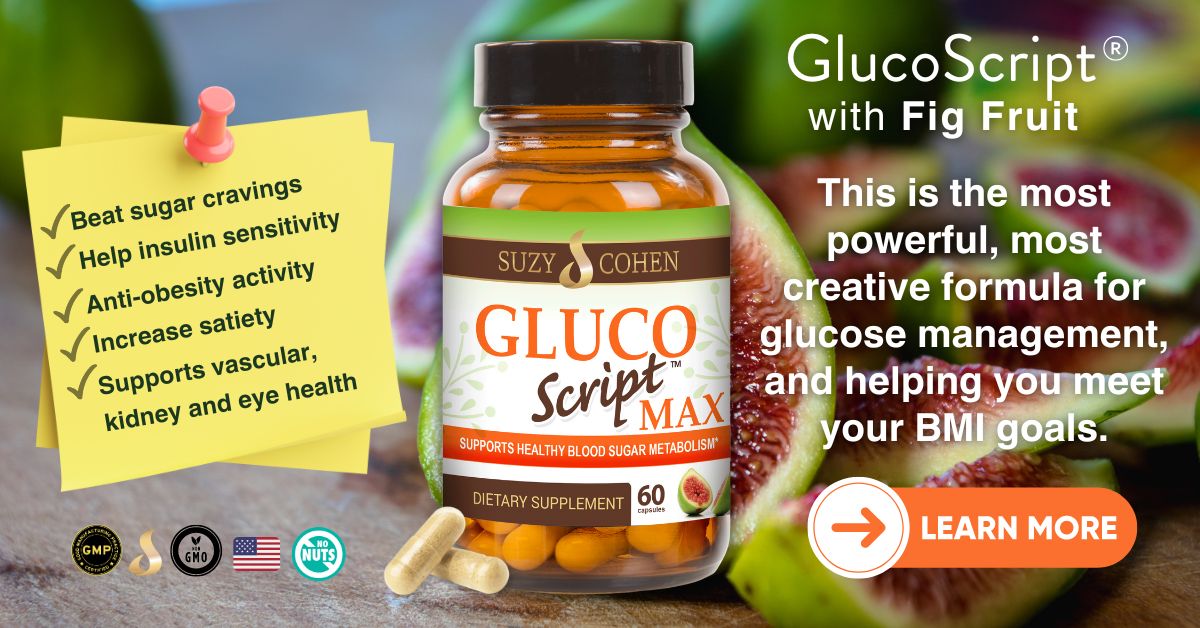What's On This Page?
TogglePreeclampsia is a dangerous issue and today’s article will showcase how aspirin may help. And that’s important because pregnancy should be a time of joy, but sadly for some women it brings unexpected health challenges.
Preeclampsia is a condition that occurs during pregnancy where blood pressure spikes very high and excess protein spills into the urine. It limits the amount of blood flowing through the placenta which can harm a growing baby, reduce birth weight and sometimes cause infant death due to premature birth. Carrying the baby to full term becomes one primary goal for a mom diagnosed with preeclampsia.
In the United States, preeclampsia may cause about 15% of premature births. Liver and kidney damage may ensue, as well as fluid in the lungs. The rise of blood pressure obviously puts a mother and child at risk for great harm, and miscarriage and fatalities do occur.
Is There a Predisposition for Preeclampsia?
Some women are more prone to this condition than others, especially if they come into their pregnancy with hypertension, excessive weight or obesity, or a pre-existing condition of diabetes, kidney disease, lupus or rheumatoid arthritis.
There are other factors too. For example, getting pregnant after age 40 may increase risk, as does in vitro fertilization, donor insemination, or carrying twins or triplets. Here’s an image displaying a few symptoms of preeclampsia.

Very little can be done to prevent the onset of the condition, however, there are several ways to take care of yourself and reduce the serious complications. It makes sense that lying on your left side (to take the baby’s weight off major blood vessels) is a wise thing to do. Also, it’s good to consume less processed or refined foods that contain a lot of salt (sodium chloride). That’s because this type of refined salt may exacerbate hypertension and ankle edema.
Many doctors suggest bed rest during pregnancy to prevent fluctuations in blood pressure, but of course, even that is up for debate as conflicting studies suggest that bed rest can increase the risk of blood clots and possibly add to the stress level as income may be impacted. There’s not real good answer, or maybe there is?
Could it be as simple as aspirin?
There are several intriguing studies regarding aspirin and preeclampsia including one published in January 2019, in the respected French journal, Presse Medicale.
The researchers point out that taking aspirin in the evening (or bedtime) may be helpful in high-risk patients, or women who have a prior history of preeclampsia. This is not the first study to suggest aspirin is useful. And it makes total sense.
Aspirin is a platelet inhibitor, that means it works to thin the blood which in turn, helps regulate blood pressure. A low-dose of aspirin (like a baby aspirin 81 mg) blocks Thromboxane A2 (TXA2) from forming in the platelets. Think of thromboxane as glue. When you block the glue formation, that makes the platelets less sticky.
So one effect from aspirin is to keep the blood thinner and less sticky so to speak. It should make sense then, that too much aspirin will cause excessive thinning of the blood and easy bruising and bleeding.
Prostacyclin to Thromboxane Ratio
Aspirin stops thromboxane A2 from forming by platelets and increases the ratio of prostacyclin to TXA2. This action is the equivalent of dissolving the glue that causes blood clumps! The biomarkers I mention here are measured in the bloodstream. So it’s a blood test you can ask your doctor for, it’s not urine or saliva.
Aspirin interferes with your blood’s ability to clot normally. The blood gets more slippery and thin. This is exactly why people who have suffered a heart attack take low-dose aspirin. It is intended to prevent blood clots and sticky clumps from forming in the arteries that lead to the heart.
Aspirin’s mechanism of action is not that novel. It was derived years ago from an herb called white willow bark. There are many herbs available that have a similar mechanism of action to aspirin, one of platelet inhibition.
Several studies have now clearly shown that low-dose (baby) aspirin are effective for both mother and baby! At least in secondary prevention of preeclampsia, or in high-risk patients who have a history of preeclampsia in an earlier pregnancy.
That’s not to say that first time moms can’t use it. Of course, this is all entirely between you and your OB/GYN. I have no idea if aspirin (or natural herbs that work in the same exact way) are useful for you. I couldn’t possibly know so please ask your doctor what’s right for you. My article is intended to be informative, not medical advice and for the record, I am not a doctor, just a health blogger reporting on these exciting new studies.
Probiotics May Reduce Risk
There is a protective effect of lactobacillus strains of probiotics, found in many good brands including Dr. Ohirra’s, VSL and others, and this is interesting because most people never consider that the GI tract has any correlation to a healthy pregnancy. It does, and what mom eats truly has an impact on her baby’s health.
Thyroid Hormone and Preeclampsia
More importantly, your gut flora (microbiome) directly impacts your thyroid hormone levels. Probiotics allow for more higher thyroid hormone conversion (about 20-25% better conversion of T3) and that’s important because adequate thyroid hormone improves fertility. Hypothyroidism can lead to miscarriage. If you’d like to learn more about hypothyroidism, click on the banner below to get a free book on the subject:
But there’s more to friendly gut flora and probiotic restoration. It is known to reduce pro-inflammatory cytokines in the body, and this results in better pregnancy outcomes. That’s exactly what researchers found in a STUDY of probiotics and preeclampsia.
Probiotics and foods that confer lactobacillus were shown to be promising in terms of preterm delivery. What a woman consumes before getting pregnant, and during pregnancy matters. Diet has a profound impact on the health of both mother and baby, and there are even long-term consequences to babies even after they are born.
You might be interested in my other article, How Stress and Cortisol Impact Hashimoto’s and Graves’ Disease.
Check Your Cortisol to Cortisone Ratio
Another brand new STUDY has shown that lower maternal cortisol (serum) to cortisone ratio precedes preeclampsia and fetal growth restriction by many weeks. This is a blood test that any doctor can order for you. You can also check cortisone and cortisol levels with an at-home test called the DUTCH Complete Test.
Cortisol is a hormone your body makes. It is made in response to stress. When given as a medication, the name is called “hydrocortisone.” We know that high cortisol is the result of stress, and higher cortisol levels during pregnancy translate to lower birth weights in baby. But we didn’t know (until now) that higher cortisol could predict preeclampsia. More specifically the ratio matters, not either one alone.
Cortisol is made from cortisone, compliments of an enzyme called 11β-hydroxysteroid dehydrogenase type 1 (abbreviated as 11βHSD1).
This enzyme turns cortisone into cortisol, please note the number 1 at the end of that.
The opposite direction of this requires another enzyme 11β-hydroxysteroid dehydrogenase type 2 (abbreviated as 11βHSD2), which has the number 2 at the end of it. This enzyme drives the opposite reaction where cortisol breaks down into cortisone.

As you can see, the two enzymes regulate the production of cortisol and cortisone which is in contact flux. These two beautiful enzymes help you make your own human steroids and also break them down. Cortisol and cortisone are both steroids and you need each to survive and thrive.
But like many critical and useful compounds in the body, alterations of normal levels can be bad for you. When you have excessive amounts of either enzyme, it drives the biochemical reaction faster and faster.
Too much 11βHSD2 causes you to synthesize more cortisone and break down cortisol very quickly. Likewise, too little 11βHSD2 causes a build up of cortisol.
The higher your cortisol, the higher your risk for preeclampsia as well as other cortisol-induced conditions like depression, panic attacks, hyperglycemia, diabetes, autoimmune flare ups (including Hashimoto’s thyroiditis) hypercholesterolemia and suppressed immunity (more infections).
Speaking of Hashimoto’s, and thyroid disease, hypomethylation, Graves’ disease and more….I have a Q&A blog that I wrote which might answer some of your questions. Take a few minutes to skim THIS ARTICLE, which includes a graphic that I made showing people how low vitamin D and excessive cortisol can cause hypothyroidism (by creating more rT3). It’s intersting, Your Questions Answered About Hashimoto’s, Peroxide and Thyroid.
You might be interested in my other article, How Stress and Cortisol Impact Hashimoto’s and Graves’ Disease.
The point is, this is why the avoidance of stress (which increases cortisol levels) is so challegning for pregnant women, especially if they are coming into the pregnancy as overweight or hypertensive.
The higher the levels of 11βHSD2 (and conversely the lower the levels of 11βHSD1) may precipitate preeclampsia or eclampsia, which are potentially serious conditions that impact blood pressure. The measurements for blood pressure are as follows, and are not aberrant or one-time occurrences.
Preeclampsia Blood pressure 140/90 mmHg
Eclampsia Blood pressure 160/110 mmHg
When it comes to enzyme issues 11βHSD2, consider that there may be genetic mutations and SNPs in this gene. This fact explains why a family history of preeclampsia may increase your own personal risk. Keep in mind that genomic expression of any SNP is impacted by many factors.
This is not the first time cortisol is found guilty of raising blood pressure. We’ve known this for a very long time. We’ve also known that massage and meditation can naturally reduce cortisol.
Even 10 years ago, there was a study that examined the role of 11βHSD2 enzyme in adults with hypertension. Evaluations of patients in this particular STUDY who had “essential hypertension” showed a longer half-life of cortisol and a higher cortisol ratio to cortisone (this time urinary, not blood).
This suggests a deficiency of 11βHSD2 activity which, as you can see in the graphic I made for you, leads to a buildup of cortisol.
Eating more protein is another possible safety measure that restores some of the lost essential amino acids that often spill into the urine due to proteinuria. Some ways to consume more protein from your diet include eating lean meats like chicken, beef, pork as well as salmon, eggs, quinoa, yogurt, cottage cheese, nuts, and beans.
Preeclampsia is a potentially serious condition affecting many women so do take it seriously. Make sure you take a high-quality prenatal vitamin, see your doctor for routine care and be on the alert for symptoms that point to hypertension such as leg or ankle swelling, blurry vision, headache, shortness of breath, fatigue, pounding in your chest or ears and dizziness.

Suzy Cohen, has been a licensed pharmacist for over 30 years and believes the best approach to chronic illness is a combination of natural medicine and conventional. She founded her own dietary supplement company specializing in custom-formulas, some of which have patents. With a special focus on functional medicine, thyroid health and drug nutrient depletion, Suzy is the author of several related books including Thyroid Healthy, Drug Muggers, Diabetes Without Drugs, and a nationally syndicated column.



